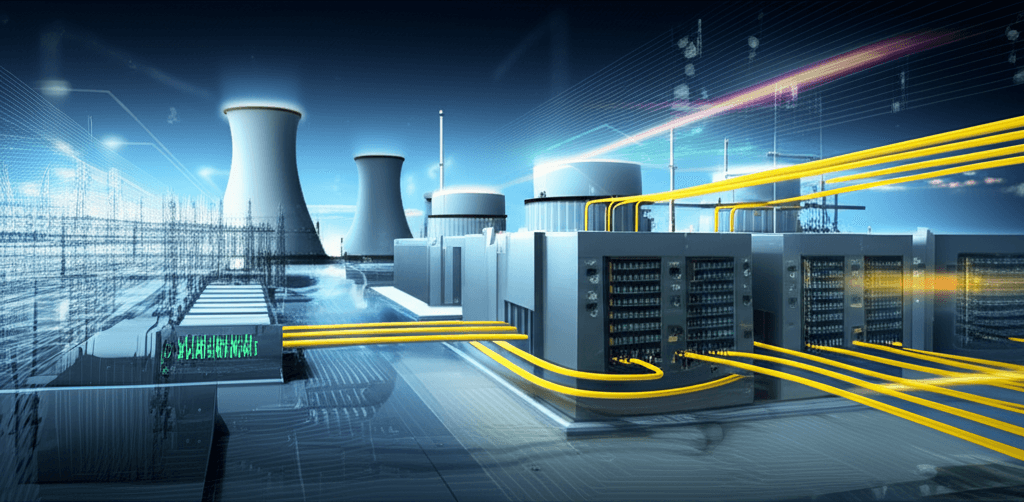Trump Pushes Emergency Powers, Nuclear for US AI Dominance
Trump's high-stakes plan for AI dominance leverages executive power and nuclear energy to build data centers, facing huge hurdles.
June 27, 2025

In a significant push to accelerate the United States' dominance in the global artificial intelligence race, the Trump administration is preparing a series of executive actions designed to fast-track the development of AI data centers.[1] Citing the technological arms race with China as a primary motivator, the planned orders aim to slash regulatory hurdles and streamline the construction of the power-hungry facilities that form the backbone of AI innovation.[1][2] These moves signal a continuation and, in some areas, an intensification of efforts to bolster America's AI infrastructure, building upon initiatives from the previous administration while injecting a new sense of urgency driven by national security and economic competitiveness.[3][4][5] The administration's strategy appears to be multifaceted, involving the use of emergency powers, the allocation of federal lands, and a significant push towards nuclear energy to meet the colossal electricity demands of next-generation computing.[6][7][4]
At the core of the administration's plan is the use of executive authority to overcome the significant bottlenecks that currently hinder data center construction.[7][4] These include lengthy environmental permitting processes and the complex, often years-long studies required to connect new power generation projects to an already strained national grid.[8][9] To counter this, President Trump has indicated he will use emergency declarations to allow for the immediate construction of power plants co-located with data centers.[7] This approach extends to identifying federal lands, including sites managed by the Department of Energy and even those associated with national security facilities like Los Alamos and Sandia National Laboratories, as prime locations for new AI infrastructure.[3][5][10] By offering these pre-vetted sites with existing energy infrastructure, the administration hopes to create a more favorable environment for private sector investment and dramatically shorten development timelines.[3][11] This initiative is part of a broader push that includes the "Stargate Project," a massive, privately funded venture involving major tech players like OpenAI, Oracle, and SoftBank, which aims to invest hundreds of billions of dollars into AI infrastructure.[12][13][4]
The enormous energy requirement of AI is a central challenge the administration seeks to address, with a notable focus on nuclear power.[6][14] Estimates of future electricity demand from data centers are staggering; some projections suggest they could account for up to 13% of total U.S. electricity consumption by 2030, a massive leap from current levels.[15] One forecast from Deloitte warns that power demand from AI data centers alone could increase more than thirtyfold by 2035.[16] In response, President Trump has signed executive orders to accelerate nuclear energy development four-fold over the next 25 years, designating new reactors as critical defense infrastructure to serve as reliable, high-density power sources for AI centers.[6] This emphasis on nuclear power is a distinct shift, although the administration also acknowledges other energy sources, including natural gas and renewables, may be considered.[3][7] The co-location of power plants directly with data centers is a key strategy to bypass the overloaded public grid and ensure a stable power supply for these critical facilities.[7][4]
While the push for rapid expansion is framed as a matter of national priority, it brings a host of significant challenges and concerns. The immense strain on the U.S. power grid is a primary issue, with data center growth already causing power distortions and rising electricity costs for residential customers in some markets.[17][16] Environmental advocates have raised alarms about fast-tracking fossil fuel plants, such as coal and gas, which could lead to increased greenhouse gas emissions and air pollution.[7] The health impacts are also a consideration, with one report linking pollution from data center electricity generation to premature deaths and significant health costs.[18] Furthermore, there are substantial logistical hurdles, including shortages of key grid components like transformers and a lack of skilled labor to build out the necessary infrastructure.[19][9] Security is another critical vulnerability; a recent report circulated within the White House warns that U.S. data centers are susceptible to espionage and sabotage, which could compromise national security in the high-stakes AI race with China.[20][21]
In conclusion, the Trump administration's plan to expedite AI data center expansion represents a high-stakes gamble to secure America's technological future. By leveraging executive power to cut red tape and promote new energy sources, especially nuclear power, the White House aims to create an unparalleled ecosystem for AI development.[6][4] This aggressive strategy is driven by the clear imperative to maintain a competitive edge over global rivals and foster economic growth.[12][11][4] However, the path forward is fraught with complexity. Successfully navigating the immense energy and infrastructure challenges, addressing valid environmental and public health concerns, and securing these vital digital fortresses from foreign threats will be critical.[17][20][18] The ultimate success of this ambitious national project will depend on a delicate balance between the urgent drive for innovation and the pragmatic realities of building a sustainable and secure foundation for an AI-powered future.
Sources
[5]
[6]
[9]
[12]
[15]
[16]
[18]
[19]
[20]
[21]